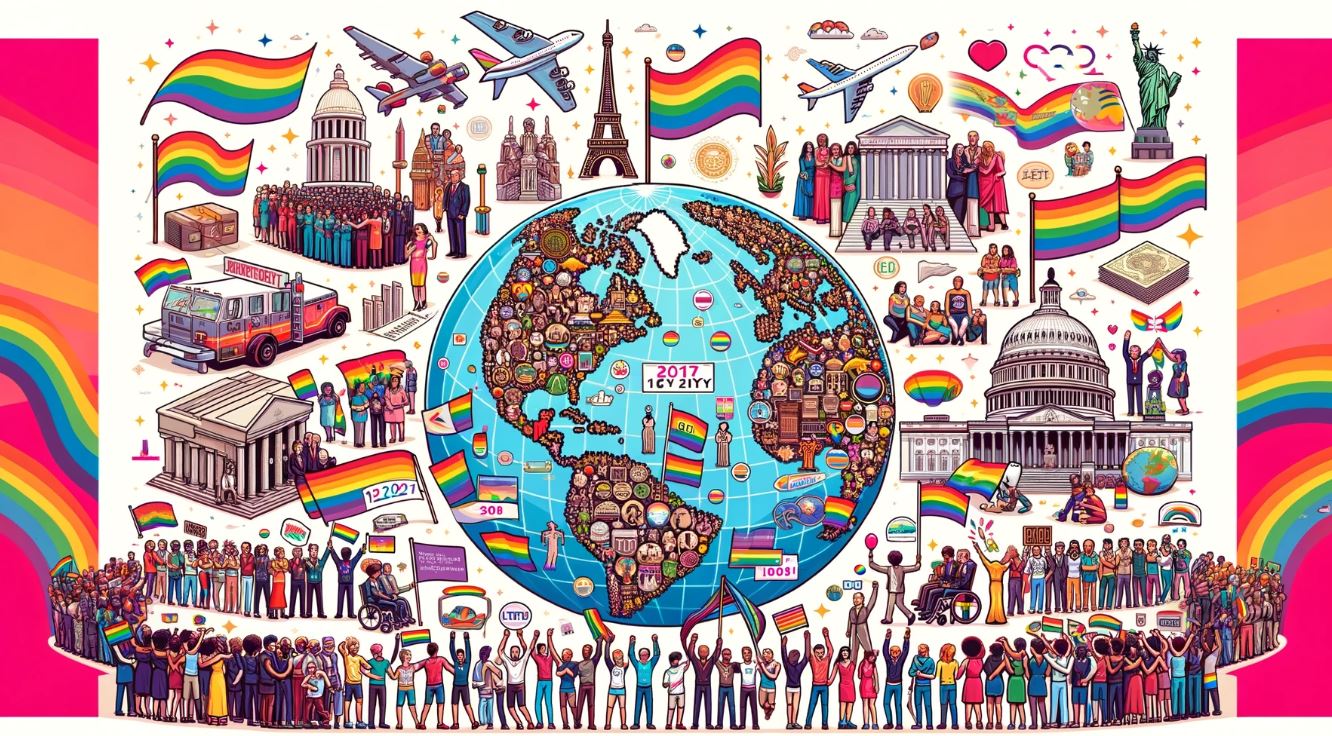Gay Rights : How They Have Evolved in the 21st Century
The 21st century has witnessed remarkable strides in the evolution of gay rights, marking a significant shift in societal attitudes and legal frameworks. From the legalization of same-sex marriage to the broader acceptance of LGBTQ+ individuals, the landscape of gay rights has undergone profound changes. This article delves into the milestones, challenges, and ongoing efforts shaping the journey towards equality and acceptance for the gay community in the modern era.
The Evolution of Legal Rights
Early 2000s: Breaking Ground
Legal Recognition and Civil Partnerships
- 2001: The Netherlands became the first country to legalize same-sex marriage, setting a precedent for global change.
- Civil Partnerships: Many countries, starting with Denmark in 1989, adopted civil partnership laws, offering legal recognition to same-sex couples before marriage equality.
Mid to Late 2000s: Momentum Builds
Expanding Marriage Equality
- Global Spread: Post-2001, countries like Belgium (2003), Canada (2005), and South Africa (2006) legalized same-sex marriage.
- United States: The landmark case, Obergefell v. Hodges (2015), legalized same-sex marriage nationwide.
Anti-Discrimination Laws
- Workplace and Society: Increasingly, countries implemented laws prohibiting discrimination based on sexual orientation in employment, housing, and public services.
Societal Shifts
Growing Acceptance
Public Opinion and Visibility
- Media Representation: Enhanced visibility of gay characters in media contributed to normalizing and humanizing LGBTQ+ experiences.
- Public Support: Polls showed a steady increase in support for gay rights, particularly among younger generations.
Challenges and Backlash
Resistance and Rights Violation
- Opposition: Despite advancements, opposition persists, especially in regions with conservative or religious majorities.
- Global Inequality: Gay rights vary significantly worldwide, with some countries enforcing harsh penalties against LGBTQ+ individuals.
Ongoing Efforts and Future Outlook
Advocacy and Education
Grassroots Movements and NGOs
- Local to Global: Grassroots organizations and NGOs continue to fight for rights, provide support, and educate the public.
- International Pressure: Global organizations like the UN and EU play crucial roles in advocating for gay rights internationally.
Technology and Connectivity
Online Platforms and Social Media
- Awareness and Community: Social media has become a powerful tool for raising awareness, sharing stories, and building communities.
- Digital Activism: Online campaigns and virtual events keep the momentum alive, especially in regions where physical gatherings are risky.
Conclusion
The evolution of gay rights in the 21st century illustrates a journey of resilience, hope, and ongoing struggle. While significant progress has been made, the path to full equality and acceptance remains a global challenge. The continued efforts of activists, supportive policies, and changing social attitudes are pivotal in shaping a more inclusive future.
Frequently Asked Questions
Q1: What was the first country to legalize same-sex marriage? A1: The Netherlands was the first country to legalize same-sex marriage in 2001.
Q2: How has public opinion on gay rights changed in recent years? A2: Public opinion has generally become more supportive of gay rights, with a notable increase in acceptance among younger generations.
Q3: Are gay rights the same in all countries? A3: No, gay rights vary significantly worldwide, with some countries offering full equality while others impose strict penalties.














+ There are no comments
Add yours